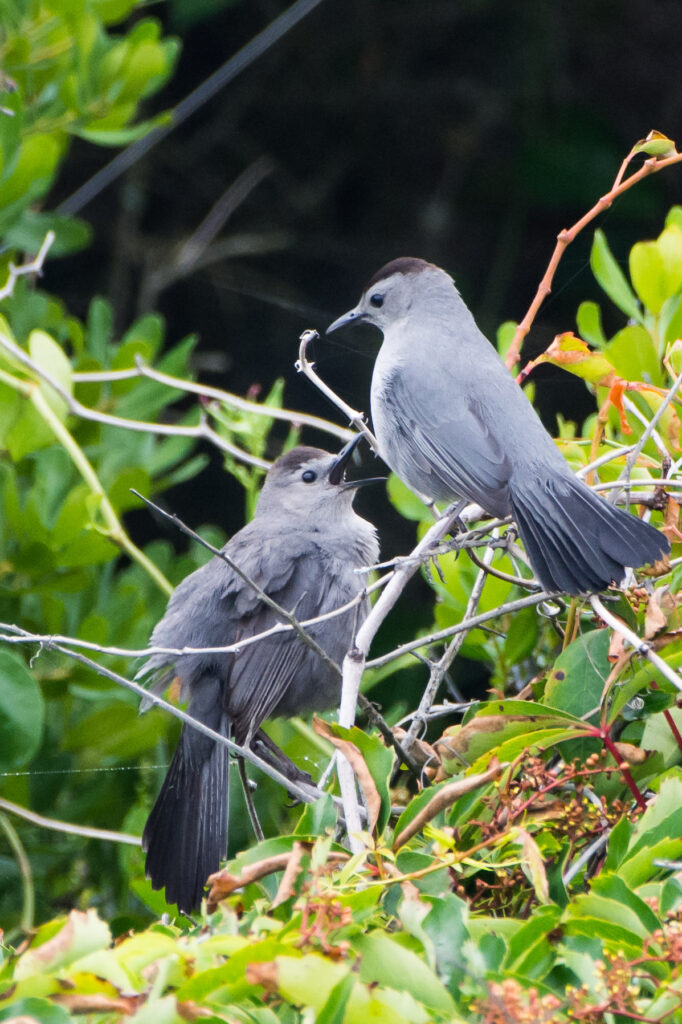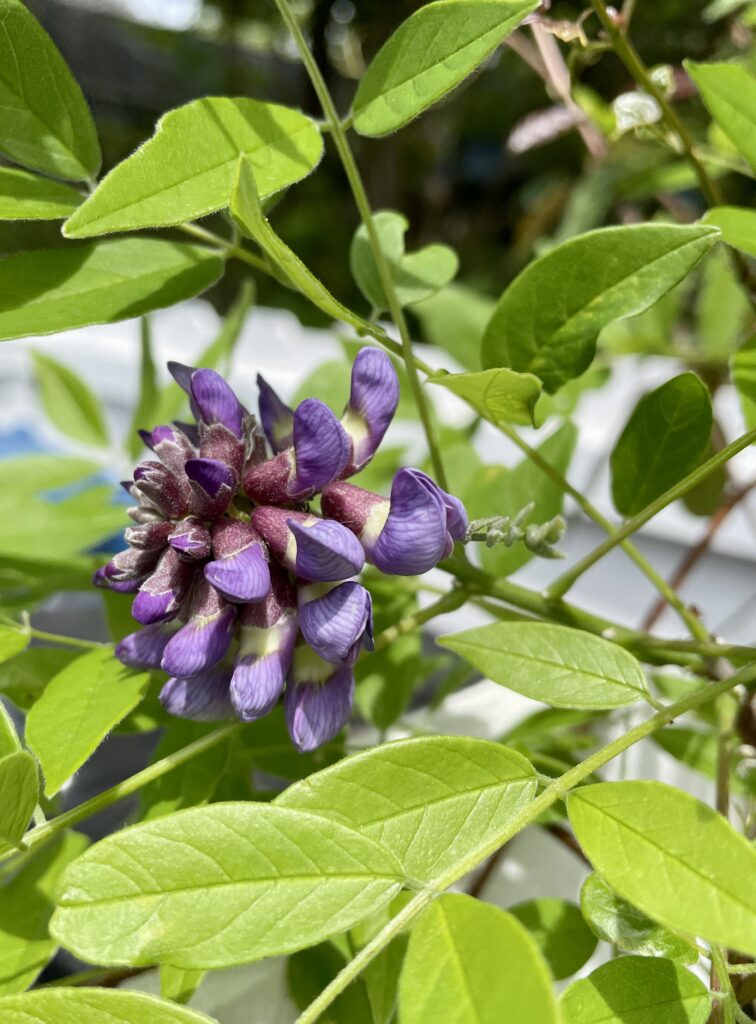
Photo by Gibbs Barrow
By Mary Reid Barrow
One beautiful Sunday about a month after the first day of spring, spring truly arrived in my yard.
Who should come sashaying in round the corner of the house and to the suet feeder but a pair of catbirds. They stopped for a quick check of the suet and then zipped off to the cover of my hedgerow.
And just like that, the catbirds were back. Every year, I wonder if they will ever come.
The photo was taken by my son, Gibbs Barrow, later in the season of another year and place, but it is such a good photo of these special birds I had to use it.
The only feature missing from their handsome gray feathered outfit and jaunty black cap is a deep red spot at their tail base.
For the most part, these birds don’t show off their finery. Instead, they skulk about in the shrubbery behind my house but their mewing call, just like a cat’s meow, leaves no doubt they are there.
On occasion, the male, only when he’s feeling amorous, will come out of hiding and sing his heart out from a treetop, like a mockingbird.
I was also still waiting for my first hummingbird. That same day, I reached for the feeder to change the sugar water and heard that old familiar, cranky “chip-chip chip” as a hidden hummer fussed at me from a shrub.

Then, with fresh new water in the feeder, I watched one chase another, zooming back and forth across the deck. The winner, I suppose, settled in to drink. And just that fast, the hummers were back too!
I was glad the female got first crack at the feeder. She, who is solely responsible for home building and childcare, needs all the help she can get. Dad just spends his summer gadding about the neighborhood feeder bars.
That same day down in the garden, I just happened to turn around to see my first box turtle of the year! I am pretty sure she was an old friend who cruises under my blueberry bushes in summer looking for fallen berries.

A female box turtle has yellow eyes and a smooth bottom shell. A male has red eyes and a concave bottom shell. But I didn’t need to check that day because I realized I had interrupted her in an act far more important than dining on a strawberry.
She was definitely a “she,” leaving behind a hole in the sandy path with a damp area in the center. This was the beginning of a nest, I’m sure, and I so hope she continued somewhere else in the garden.
And that day, I realized my “new” native wisteria was about to burst into bloom for the first time, after torturing me for four years.
The internal clocks of my wisteria and my visitors are set according to the sun, the weather and other factors, but my clock is set to their time. And when they showed up, so did my spring.

Subscribe to read more like this from Mary Reid every week!
